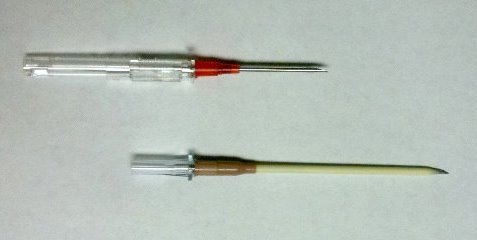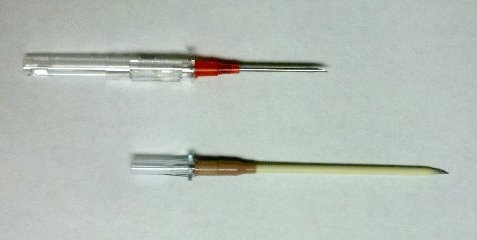I’ve gotten quite a few comments on my recent post on the “passing” of the rectal exam. One theme has come up that I want to clarify: proper position. Both yours and the patient’s, to be specific.
Precordial Thump commented:
“I have concerns about performing the rectal exam with the patient supine in frog leg position if a pelvic fracture is present. Any further comment?”
This was in regards to my opinion about the proper postion, noted at the very end of my post. Unfortunately, it was a bit too simplistic. As noted, the exam should be performed while the patient is supine, and not on their side, in order to reduce unexpected movement on their part.
The legs have to be moved apart somewhat, because it’s very important to examine the perirectal area before placing a finger. On occasion, blood from elsewhere (IV stick gone wild, bloody clothing) has contaminated the area. If the examiner just blindly inserts a finger and it comes back bloody due to contamination, they have just created a need for some additional, unnecessary diagnostic tests. If the area is bloody before the exam, take a moment to wipe it clean.
There are two ways to get the needed exposure. One thigh can be gently abducted enough to see the perineum. However, most ED carts are not very wide, so the amount of movement allowed is usually small. I usually find it necessary to slightly flex the hip and externally rotate it (half frog-leg), but only enough for exposure. Hopefully you would have detected any significant pelvic fractures with your physical exam before this point, and can plan the rectal exam accordingly.
My final comment deals with examiner position, which nobody ever talks about. One common error I see is that the wrong hand/wrong side problem. People do their best exam with their dominant hand. But if they’re on the wrong side of the patient, they turn at all kinds of angles to try to do it. I call it the “reverse english” exam (billiard reference). The ideal way is to stand next to the patient, looking toward their head, with your dominant hand next to them. Reach across and move their thigh with your nondominant hand, and examine with the dominant. So if you’re right handed, stand on their right side and use your right hand to do the exam.
Related post:


